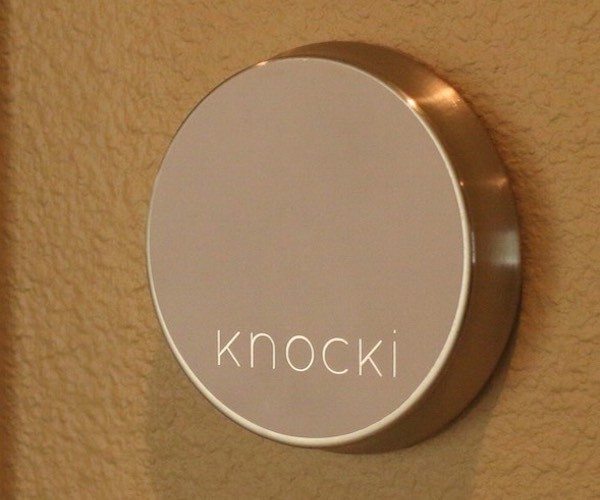Intelligent, wifi-connected hubs are common–simple devices that attempt to make “plain” places smart are everywhere and more seem to appear on the market regularly. This week a device was announced that has made a dramatic entrance, even though it is not expected to be available until the 2015 holidays. The Knocki responds to, as it’s name implies, patterns of knocks on whatever surface it is mounted to. For example, it could be programmed to send a text to your phone when someone knocks at the door or turn on a bedside lamp when you knock on the nightstand.
Knocki does several things very right when you consider what it does. Most importantly, a single Knocki device can can perform multiple tasks and control multiple devices, all dependent on the pattern of the knock. On the technical side, it is completely wifi-based, so there is no additional device needed that would take up yet another jack on your router, and the Knocki application embraces expanded possibilities with systems like IFTTT, Nest, Wemo, Insteon, Apple Home Kit, etc.

On the pragmatic side of things, Knocki also holds its own; with a pre-order price of only $59 each, it wouldn’t be out of consideration to have a few devices spread around to control things that are otherwise inconvenient. Knocki also runs on two AA batteries, since a plug or wire would severely interfere with it’s ability to sense vibrations–the company claims that a single pair of batteries will last a year.
Knocki – Make Any Surface Smart from Model2Web, LLC on Vimeo.
Finally, there is the not to be overlooked potential of Knocki for use with individuals with hearing loss or limited mobility; having a light flash when someone knocks at the door is an obvious opportunity, as is making lighting accessible to those who would not be able to reach a switch. It is worth noting that Internet of Things (IoT) devices are coming to market that are designed to be simple and (hopefully) solve real-world problems with technology.



